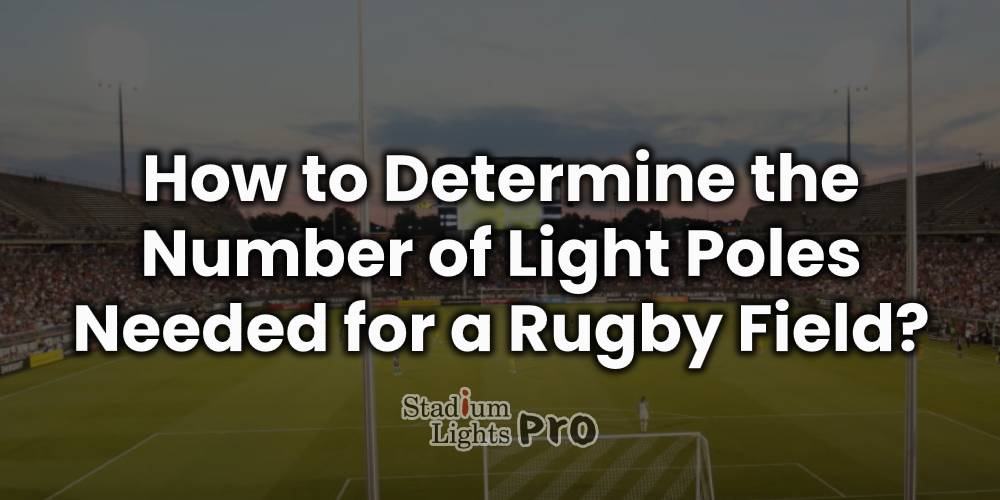The number and height of light poles required depend on various factors such as the purpose of the field, the level of play, and the governing lighting standards. This guide provides a detailed exploration of the considerations involved in determining the number and height of light poles for a rugby field, including the implications of choosing poles that are too short or excessively tall.
Table of Contents
ToggleLighting Requirements Based on Field Purpose
The purpose of a rugby field plays a significant role in determining the lighting design, including the number and height of light poles. Different field purposes require varying levels of illumination and structural considerations, as the nature of activities and standards for recreational play differ from those for professional matches. Whether a field is used casually, for organized competitions, or for high-profile televised games, the lighting system must be designed to meet the unique needs of the players, officials, and spectators.
| Level of Competition | Pole Height (meters) | Number of Poles | Details |
|---|---|---|---|
| Recreational Use | 12–18 | 4 | One pole at each corner provides adequate lighting for casual play and training sessions. |
| Club and Amateur Fields | 18–25 | 6–8 | Poles at the corners and along the sidelines ensure uniform lighting for competitive matches. |
| Professional Fields | 25–40 | 8 or more | Advanced systems, including roof-mounted fixtures in stadiums, support high-quality broadcasts. |
Recreational Use
Rugby fields designated for recreational purposes are typically intended for casual play, practice sessions, or community activities. As these fields do not host high-stakes matches or professional-level competitions, their lighting requirements are relatively relaxed compared to those of competitive venues.
Light poles for recreational fields are generally shorter, ranging from 12 to 18 meters in height. This height is sufficient to provide consistent illumination across the field for non-competitive activities without necessitating advanced or expensive infrastructure. The relatively lower height simplifies installation and maintenance while meeting the basic needs of players. Additionally, shorter poles reduce light spill into surrounding areas, making them more suitable for fields located near residential or urban spaces. However, the design must still ensure that the lighting avoids excessive shadows and glare, which could hinder play and compromise safety.
Club and Amateur Competitions
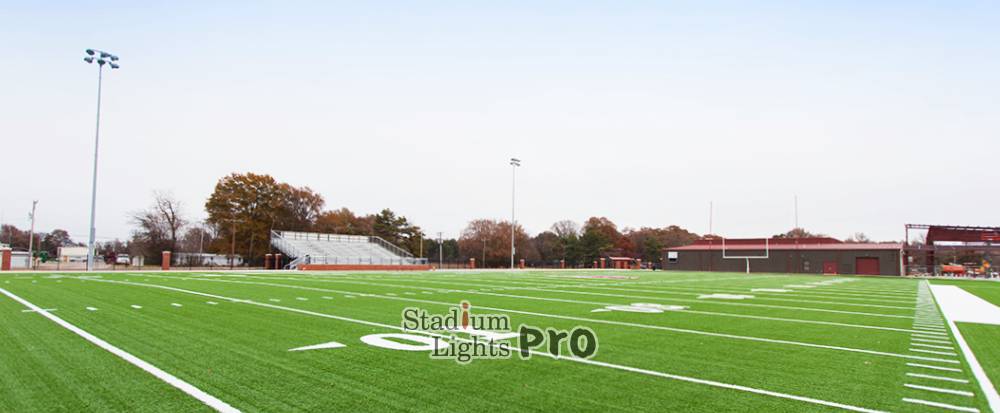
When rugby fields are used for club matches or amateur competitions, lighting requirements become more stringent to support higher levels of play. These fields need brighter and more uniform lighting to accommodate the increased speed and intensity of gameplay, as well as the expectations of players, officials, and spectators.
The height of light poles for club and amateur fields typically ranges from 18 to 25 meters. This increased height enhances light coverage and minimizes shadows, ensuring a well-lit playing surface that meets the demands of competitive matches. Properly positioned poles at this height allow for better beam angles, creating uniform illumination that benefits players and referees by improving visibility. The additional height also accommodates lighting standards set by governing bodies for local and regional competitions, ensuring compliance with regulations.
Fields used for these purposes may require more advanced lighting fixtures, such as modern LEDs, which can be adjusted to provide consistent and energy-efficient coverage. These fixtures also help reduce light pollution, ensuring that the lighting design aligns with environmental and community considerations.
Professional and Broadcast Matches
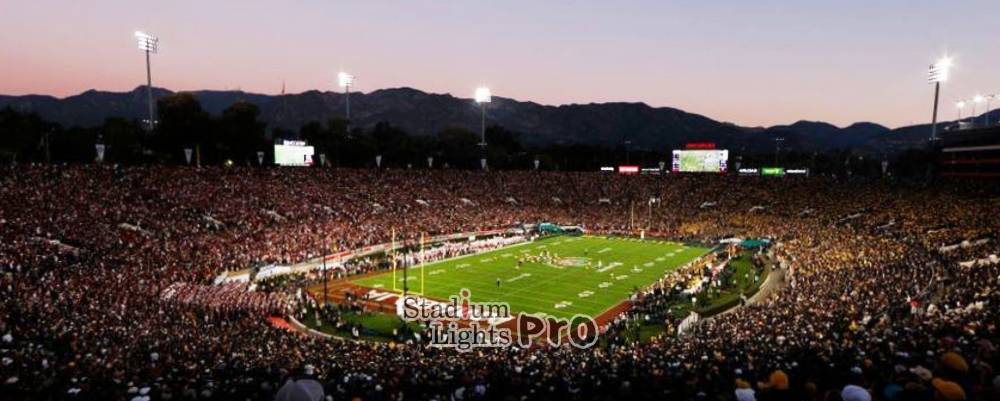
Professional-level rugby fields, particularly those used for televised matches, demand the highest levels of illumination and uniformity. Lighting systems for such fields must meet stringent standards to ensure optimal visibility for players and officials, while also catering to the needs of broadcasters who rely on consistent and high-intensity lighting for clear visuals.
Light poles for professional rugby fields are typically the tallest, ranging from 25 to 40 meters in height. This increased height allows for the installation of advanced lighting fixtures capable of delivering high-intensity illumination across the entire field. The elevated poles enable precise beam control, ensuring that the lighting is evenly distributed and free from shadows or dark spots, even in the corners and end zones.
Additionally, the greater height supports high-definition broadcasting by eliminating glare and providing clear, vibrant visuals for television audiences. These fields may also incorporate supplementary lighting systems, such as roof-mounted fixtures in stadiums, to achieve even greater control and coverage. The design must account for the needs of both players and spectators, ensuring a visually appealing and functionally effective lighting environment.
Factors Affecting Light Pole Height
Several variables influence the height of light poles required for a rugby field. These factors must be carefully evaluated to create an effective lighting system that meets the field’s purpose and adheres to relevant standards.
Field Dimensions
The size of the rugby field is a fundamental consideration in determining light pole height. A standard rugby field measures approximately 100 meters in length and 70 meters in width, with additional in-goal areas at either end. This expansive area requires lighting that can cover large distances uniformly, ensuring that all players have equal visibility regardless of their position on the field.
Higher poles allow for greater beam throw, ensuring that the light reaches all parts of the field evenly. The beam angles of the lighting fixtures must be adjusted to align with the height of the poles, creating consistent coverage without creating shadows or over-illuminated areas. Fields used for professional or high-level matches may require even taller poles due to stricter uniformity requirements.
Lighting Uniformity
Achieving consistent lighting across the field is a key aspect of any lighting design. Uniform illumination enhances player safety and performance by eliminating dark spots or overly bright areas that can disrupt visibility.
Taller light poles are advantageous in achieving uniform lighting, as they allow the light beams to spread more evenly across the field. The placement and angle of the fixtures must be carefully calculated to ensure that the light overlaps seamlessly, creating a balanced and well-lit environment. Without sufficient height, the lighting system may produce shadows, particularly near the edges of the field or in areas where the beam angles do not align correctly.
Surrounding Environment
The environment surrounding the rugby field plays a significant role in determining the appropriate pole height. Fields located in residential or urban areas must consider the potential impact of the lighting system on nearby properties and communities.
In such cases, taller poles are often preferred as they allow for more precise beam control, focusing the light downward onto the field and minimizing glare or light spill into adjacent areas. This approach reduces the likelihood of complaints from residents and helps the field comply with local zoning and environmental regulations. In rural or open areas, the constraints on light pollution may be less stringent, allowing for greater flexibility in pole height and placement.
Type of Lighting Fixtures
The choice of lighting fixtures directly affects the height of the poles required for a rugby field. Modern LED fixtures are highly efficient and capable of providing focused illumination, even from shorter poles. These fixtures can be adjusted to deliver precise beam angles, making them suitable for fields with lower or medium-height poles.
In contrast, traditional lighting systems, such as metal halide lamps, often require taller poles to achieve the same level of coverage and uniformity. The increased height allows these fixtures to distribute light more evenly, but it also adds to the overall cost and complexity of the installation. The decision between LED and traditional fixtures should consider factors such as energy efficiency, maintenance requirements, and the desired quality of illumination.
Wind Load and Structural Considerations
The structural stability of light poles is a crucial consideration, particularly for taller installations. As the height of the poles increases, they become more exposed to wind forces, which can compromise their stability and safety.
To account for wind loads, taller poles must be constructed using robust materials and anchored with strong foundations. The design must also include features such as tapered shapes or guy wires to reduce wind resistance and enhance stability. Proper engineering ensures that the poles remain secure and functional, even in adverse weather conditions, minimizing the risk of accidents or damage.
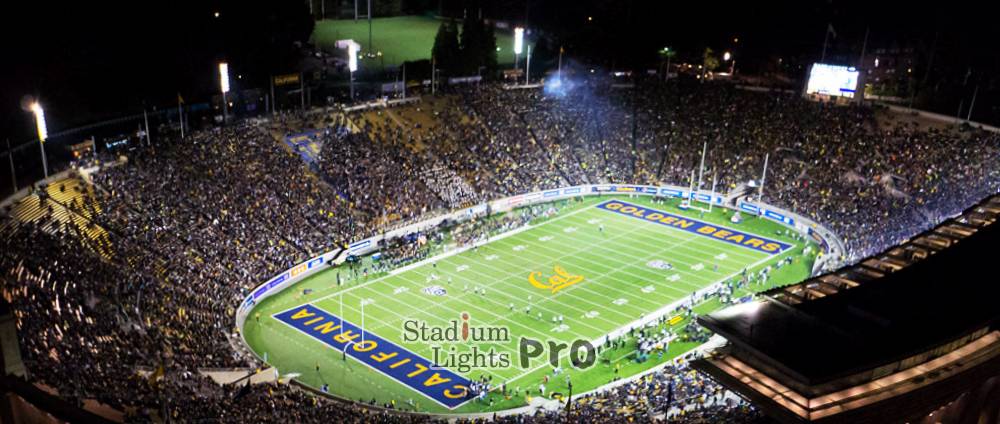
Problems of Using Poles That Are Too Short
The height of light poles is a key element in the design of a rugby field’s lighting system. Poles that are too short can cause a range of issues, negatively impacting the field’s functionality and the experience of players, officials, and spectators.
Inadequate Lighting Coverage
One of the primary challenges with shorter light poles is their inability to provide adequate coverage across the entire field. Since the light beam from a lower height has limited reach, certain areas of the field may receive insufficient illumination. This uneven lighting can create poorly lit zones that hinder player visibility, particularly during fast-paced moments of gameplay. Insufficient coverage not only affects performance but also poses safety risks, as players may struggle to see the ball, teammates, or opponents in dimly lit areas.
Increased Shadows
Short poles often lead to the creation of pronounced shadows, particularly in areas close to the light source or near larger objects like goalposts. Shadows can disrupt the flow of the game by obscuring the field’s markings, the ball, or player movements. This can frustrate both players and officials and diminish the overall quality of the match. Additionally, spectators may find it harder to follow the action, especially during night games where shadows are more noticeable under artificial lighting.
Glare and Light Pollution
Another drawback of shorter light poles is the increased likelihood of glare. When the poles are too low, the angle of the light beams can cause direct glare into the eyes of players, referees, and spectators. This can be particularly troublesome during high-action moments, where clear vision is vital for decision-making and performance.
Moreover, shorter poles often result in poor beam control, with light spilling beyond the boundaries of the field. This light pollution can disrupt nearby residential areas, leading to complaints from the community. Excessive spillover also represents a waste of energy, as the light is not effectively focused on the intended playing area.
Problems of Using Poles That Are Too Tall
While shorter poles come with their own challenges, excessively tall poles are not without their drawbacks. Choosing poles that are unnecessarily high can introduce inefficiencies and practical complications.
Higher Installation and Maintenance Costs
Tall light poles require significant investment during installation. The added height necessitates more robust materials and stronger foundations to ensure structural stability, particularly in areas prone to high winds or adverse weather. The process of erecting taller poles is also more complex, often requiring specialized equipment and longer construction timelines.
Maintenance activities, such as replacing bulbs or repairing fixtures, are far more challenging with taller poles. Accessing these fixtures may require the use of cranes or aerial lifts, leading to increased operational costs and longer downtimes for repairs. For fields that operate on tight budgets, these additional expenses can become a financial strain.
Reduced Efficiency of Light Fixtures
When poles are unnecessarily tall, the distance between the lighting fixtures and the playing surface increases. This added distance can diminish the efficiency of the fixtures, as some of the light’s intensity is lost before reaching the ground. The result may be reduced luminance levels, even if high-powered fixtures are used. In cases where light does reach the field adequately, the increased height can still make it harder to control beam angles, potentially causing uneven coverage or shadows.
The inefficient use of energy caused by excessive height can lead to higher electricity costs over time, making the system less sustainable. This issue can often be mitigated by careful planning, but it underscores the need to match pole height with the specific requirements of the field.
Visual Impact
Extremely tall light poles can also alter the visual character of the surrounding area. In residential or urban settings, the height of the poles may disrupt the skyline, creating an imposing or industrial aesthetic that some communities find unappealing. This can lead to resistance or opposition from local residents, complicating the process of obtaining approvals or permits for installation.
Even in less densely populated areas, overly tall poles can create an impression of over-design, detracting from the natural or architectural beauty of the surroundings. To address this, designers must carefully balance the functional needs of the lighting system with the aesthetic considerations of the area where the field is located.
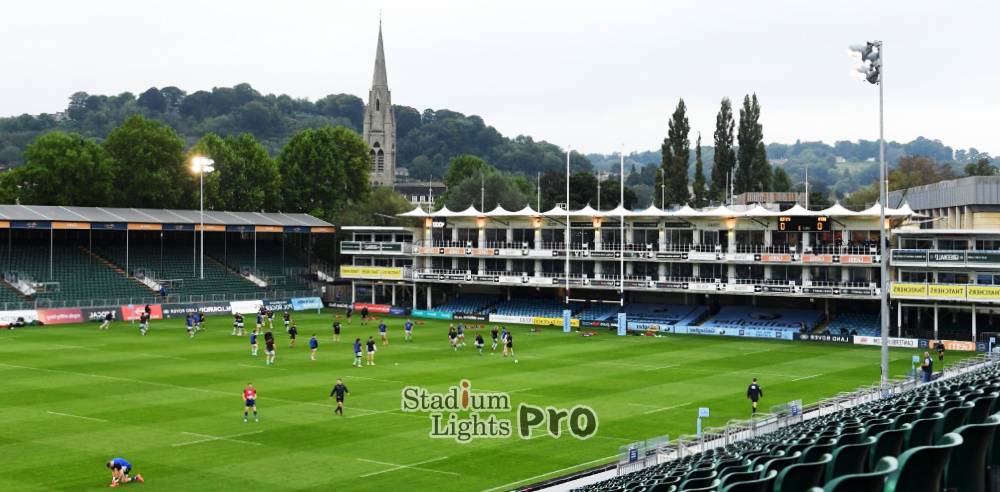
Optimal Number of Light Poles
The number of light poles required to illuminate a rugby field depends on several factors, including the size of the field, the lighting standards applicable to its intended use, and the type of fixtures being employed. By carefully evaluating these variables, designers can create a lighting system that ensures adequate coverage, uniformity, and efficiency while considering budget and environmental factors.
Recreational Fields
Recreational rugby fields are often used for casual play or training sessions, where lighting requirements are less demanding than those for competitive or professional matches. In these cases, a simple and cost-effective lighting design is typically sufficient.
A standard layout for recreational fields involves the use of four light poles, with one positioned at each corner of the field. This arrangement provides adequate illumination for the majority of the playing area while keeping installation and maintenance costs relatively low. Since recreational fields do not require the same level of luminance or uniformity as competitive fields, the four-pole setup strikes a balance between functionality and affordability.
However, care must be taken to ensure that the placement and height of these poles minimize shadows and provide consistent lighting across the field. The fixtures used in recreational fields are generally less powerful than those in competitive settings, but they should still be carefully calibrated to avoid glare and excessive light spill into surrounding areas.
Club and Amateur Fields
Fields used for club matches and amateur competitions require more comprehensive lighting to accommodate the higher levels of play and ensure player safety and performance. These fields often host matches in the evenings, making uniform and sufficient lighting a necessity for both participants and spectators.
For these fields, six to eight light poles are commonly used. Typically, additional poles are placed along the sidelines to enhance coverage and ensure uniform illumination. A six-pole arrangement might consist of one pole at each corner and two additional poles along the length of the field on opposite sidelines. For eight-pole configurations, the extra poles are strategically positioned to further reduce shadows and improve light distribution.
This design ensures that the field meets the lighting standards for club-level competitions, which typically require higher levels of brightness and uniformity. The poles must be positioned to avoid interfering with gameplay or obstructing the view of spectators, while the fixtures should provide focused, efficient illumination.
Professional Fields
Professional rugby fields, particularly those used for televised matches or major competitions, demand the highest standards of lighting design. These fields must meet strict requirements for luminance, uniformity, and glare control to ensure optimal visibility for players, officials, and spectators, as well as for broadcasting purposes.
The number of light poles required for professional fields depends on the specific lighting standards and the design of the venue. In open fields, eight or more light poles are typically used, with their placement carefully planned to provide even coverage across the entire playing surface. Additional poles may be positioned along the perimeter to eliminate dark spots and enhance the overall quality of illumination.
In stadium settings, advanced lighting systems often include roof-mounted fixtures in addition to traditional light poles. Roof-mounted lights provide a higher vantage point, enabling more precise control over beam angles and uniformity. This setup is particularly beneficial for broadcasting, as it ensures consistent luminance and eliminates shadows that could affect camera feeds.
Professional lighting systems may also incorporate dynamic controls that allow the intensity and direction of the lights to be adjusted based on specific requirements, such as pre-game ceremonies or halftime entertainment. These features add complexity to the design but enhance the overall functionality and adaptability of the lighting system.
Conclusion
Determining the appropriate number and height of light poles for a rugby field involves balancing functional requirements with practical constraints. By considering factors such as the field’s purpose, surrounding environment, and type of lighting fixtures, designers can create a lighting system that enhances player performance, ensures safety, and delivers a satisfactory experience for spectators. Proper planning and adherence to standards can help avoid issues such as uneven lighting or excessive costs, resulting in a well-lit field that serves its intended purpose effectively.

